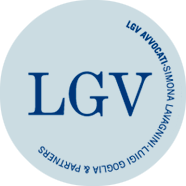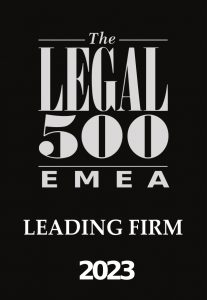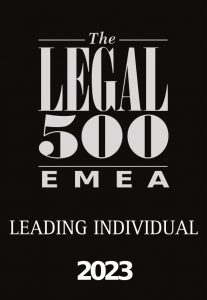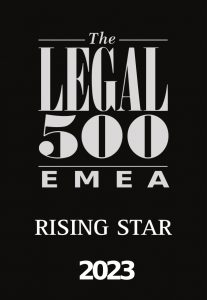CHATBOTS AND JOURNALISTIC PUBLICATIONS
17/02/2023
Could the development of chatbots have a negative impact on the newspaper industry? Many players are beginning to wonder, after recent announcements by some market players that chatbots would be integrated into search engines that could provide the user with a service to remix and process content found on the web.
Could the development of chatbots have a negative impact on the newspaper industry? Many players are beginning to wonder, after recent announcements by some market players that chatbots would be integrated into search engines that could provide the user with a service to remix and process content found on the web. In other words, the user would be able to enter a search string into the search engine, just as today, but instead of simply getting a list of websites that might be interesting to visit, as relevant to the content being searched, the user could directly get a summary of the content itself, which could dispense him or her from accessing and reading the original content. From the users’ point of view, this is undoubtedly an efficient solution, because it could enable them to acquire summary answers to their information searches very quickly, without having to visit the websites where the original content is hosted. At the same time, those interested to know in greater depth could always go beyond the summary by accessing and viewing all the original materials. From the point of view of the owners of the websites on which the original content is hosted, however, the innovation posed by chatbots could create a not insignificant problem, since it would drastically decrease user traffic on the sites themselves, with the natural consequence of making them less attractive to the advertising investments that today support much of the income of those operating in this sector. Then there would also be the additional problem of the potential negative effect of this innovation on the way of calculating the fair compensation due to publishers of journalistic publications, which online platforms must now pay following the introduction in our legal system of a new related right for online uses of newspaper articles (see Article 43bis Law 633/41, as introduced into national law following the implementation of EU Directive 790/2019 on the Digital Single Market). The rule in question establishes, as is well known, that reproductions of journalistic publications by online platforms are subject to remuneration, unless the parts of the publications used by online platforms are so short, that the network user is nevertheless led to consult the journalistic publication in its entirety. The remuneration that platforms should pay to publishers of journalistic publications has recently been disciplined by the AGCOM regulation on the identification of criteria for determining fair compensation for the online use of publications of a journalistic nature under Article 43bis of Law 633/41 (Resolution 3/23/CONS https://www.agcom.it/documents/10179/29302270/Allegato+25-1-2023/58525b07-198f-46de-93c8-bd7e3a7a162e?version=1.0). One of the criteria for determining the fee is the number of online consultations of the publisher’s journalistic publications on the provider’s services, expressed in terms of views and user interactions and measured in accordance with criteria of methodological correctness, transparency and verifiability. This criterion should be combined with others, such as the publisher’s market relevance, expressed in terms of online audience and surveyed on a periodic basis in an unbiased manner. Also relevant are the number of journalists, the costs of technological and infrastructural investments for the realization of journalistic publications disseminated online and their communication to the public, adherence to codes of conduct, and the publisher’s years of activity, also in relation to the newspaper’s historicity in the national and local spheres. The first criteria now mentioned (i.e., that of the number of online consultations and that of the publisher’s online audience) could be negatively impacted by the operation of the new chatbots, to the extent that the use of chatbots would cause a reduction in the number of views by users of news publications (in fact, users might be satisfied with the chatbot’s summaries). In addition, and for the same reason, there could also be a contraction of publishers’ online audience, which would further negatively affect the criteria for calculating fair compensation. On the other hand, the realization of summaries of the content of journalistic publications by chatbots could constitute a form of exploitation of the same, however subject to the authorization of the rights holders, although the assessment could depend on the system taken into consideration. While in fact this type of exploitation might be covered by “fair use” in the United States, in continental jurisdictions it might not be possible to use the exceptions regime. In Italy, for example, it could be argued that the realization of summaries by chatbots is not allowed (in the absence of a license) either by the exceptions on text & data mining or by the exception on citation and summary. Regarding the first type of exceptions, EU Directive 790/2019 and its subsequent implementation in Italy (current Art. 70ter and 70quater Law 633/41) provided for the introduction of limitations on the exclusive copyrights in favor of certain parties, aimed at allowing access to data, works or other materials available in networks or databases to which users have lawful access, and then to put in place, for their own research purposes, automated techniques for the analysis of large amounts of text, sound, images, data or metadata in digital format with the aim of generating information, including patterns, trends and correlations. The exceptions of text & data mining are first and foremost aimed at research organizations and cultural heritage institutions, which can then carry out both text & data mining operations for research purposes, as well as the communication to the public of the outcomes of the research itself, expressed in new original works. For entities other than research organizations and cultural heritage protection institutes, there is a text & data mining exception, which, however, seems to have a more limited scope: these types of users may in fact carry out reproduction and extraction operations from works or other materials contained in networks or databases to which they have legitimate access, but on condition that the use has not been expressly reserved by the rights holders; furthermore, the rule does not provide anything regarding the reuse and therefore the communication to the public of the results, which would therefore not seem to be covered by the exception. The question then arises as to the lawfulness of the use of protected data and works by artificial intelligence systems not developed by pure research organizations. In such cases, AI will certainly be able to process materials in the public domain or otherwise not protected by exclusive rights. With regard to protected materials, on the other hand, the question may arise as to whether it is necessary to obtain from the rights holders of the works used by the AI an appropriate license permitting use for the purposes of the AI’s own development. In relation to the exceptions concerning quotation and summary (Art. 70 ff. Law 633/41), under Italian law these forms of exploitation are free if made for the use of criticism and discussion, within the limits justified by these purposes and provided that they do not constitute competition to the economic use of the work. It is precisely this last point that could generate difficulties in the context of artificial intelligence, insofar as it can be demonstrated that the creation and making available to the public of summaries of online publications by chatbots rivals the consultation of original works. Moreover, in any case, the summary, quotation or reproduction must always be accompanied by the mention of the title of the work, the names of the author and publisher, in order to protect moral rights, which should impose additional transparency obligations on chatbots that would make it obvious which source or sources were used for the realization of the summary. Finally, it should not be forgotten that our copyright law provides in Article 101 a competitive type of protection for information and news, according to which the reproduction of information and news is lawful as long as it is not carried out with the use of acts contrary to honest practices in journalistic matters and as long as the source is cited. However, acts of unauthorized reproduction or broadcasting of news bulletins of news agencies carried out before 16 hours have elapsed since the bulletin’s issuance or in any case before their publication in a newspaper or periodical that has received a license to do so, as well as acts of systematic reproduction of news, whether published or broadcast, for profit, either by newspapers or other periodicals or by broadcasting companies, are considered unlawful. The rule is rather old, as can be seen from the wording, but still relevant in its objectives, which are to protect the investment of the newspaper publishing industry from parasitic exploitation, especially in the time frame most relevant to the recovery of the investment, that is, the immediacy of the dissemination of the news item. The object of the protection of Article 101 Law 633/41 is not the intellectual work, and its form of expression, but precisely the news, in its information data, assuming that the acquisition, processing and dissemination of the news itself requires entrepreneurial investments, such as the creation and maintenance of a network of journalistic correspondents in the various territories, or the subsidization of investigative journalism, and so on. As has been noted, it is important to make sure that these investments continue to be possible, because independence and plurality of news sources are crucial and the basis of our society. Indeed, according to Article 11 of the Charter of Fundamental Rights of the European Union, everyone has the right to freedom of expression. This right includes freedom of opinion and freedom to receive or impart information or ideas without interference by public authorities and without boundary limits. In addition, the freedom of the media and their pluralism must be respected. In this context, it is important for all stakeholders to strive to find a proper balance of the interests at stake, which involves finding ways of developing an AI that on the one hand offers users increasingly advanced and efficient services, but on the other hand is also able to preserve (and perhaps even revive) the revenues of an important sector such as journalism, without damaging its independence. In this context, those players who are most attentive to the need to develop responsible digital intelligence “by design” could be favored, insofar as they offer consumers an efficient service based on transparency and reliability of sources, as well as adequate remuneration for the latter, where required by law.







